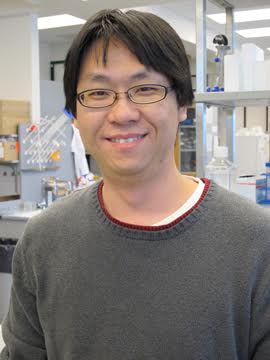Generation of second heart field and head muscle progenitors by modeling cardiopharyngeal mesoderm
Grant Project Details:
Grant Location
Grant Description
Some common birth defects affect the muscles of both a child’s face and heart. Dr. Chan is working on a pluripotent stem cell model that produces these muscles to better understand what types of cells could some day help treat these patients.
Congenital heart defects are common birth defects affecting both children and adults. According to the Minnesota Department of Heath 2009-2013 data, 9 per 10,000 live births in Hennepin and Ramsey counties have congenital heart defects. Interestingly, somegenes that are identified to account for these defects are also found to contribute to head malformations. That congenital defects of the heart and head are often linked suggests a common cell population contributing to their development. Cardiopharyngealmesoderm (CPM) is the only stem cell population that gives rise to both heart and head muscle cells. Here, we propose to establish a model to mimic CPM development in a dish to study congenital heart defects and muscle dystrophies and to produce cell types relevant for treating these diseases.In the past year, we have developed a CPM model that can produce heart and head muscle cells efficiently in a dish. We have also identified a key signature marker of head muscle cells which allows their prospective purification, thereby reducing the risk of unwanted cell types. We are in the process of using single-cell RNA-seq, a state of the art technology for deciphering the genetic makeup of individual cells, to further study the development of these heart and head muscle cells. We believe our efforts will allow us to have a better understanding of how congenital heart defects and muscle dystrophies occur, and to produce heart and head muscle cells as a platform for disease modeling, drug screening, and cell-based therapeutic applications.
Congenital heart defects are common birth defects affecting both children and adults. According to the Minnesota Department of Heath 2009-2013 data, 9 per 10,000 live births in Hennepin and Ramsey counties have congenital heart defects. Interestingly, somegenes that are identified to account for these defects are also found to contribute to head malformations. That congenital defects of the heart and head are often linked suggests a common cell population contributing to their development. Cardiopharyngealmesoderm (CPM) is the only embryonic population that gives rise to both heart and head muscle cells. Here, we propose to establish a model to mimic CPM development in a dish to study congenital heart defects and muscle dystrophies and to produce cell types relevant for treating these diseases.In the past 2 years, we have developed a CPM model that can produce heart and head muscle cells efficiently in a dish. We have also identified a key signature marker of head muscle cells which allows their prospective purification, thereby reducing the risk of unwanted cell types. We have used single-cell RNA-seq, a state of the art technology for deciphering the genetic makeup of individual cells, to further study the development of these CPM-derived cells. We believe our efforts will allow us to have a better understanding of how congenital heart defects and muscle dystrophies occur, and to produce heart and head muscle cells as a platform for disease modeling, drug screening, and cell-based therapeutic applications.
Read more <<here>>.
Grant Awardee Biography

Dr. Sunny Chan is an assistant professor in the Department of Pediatrics at the University of Minnesota. He is the recipient of the 2014 Dr. Marvin and Hadassah Bacaner Research Award in Cardiology.



